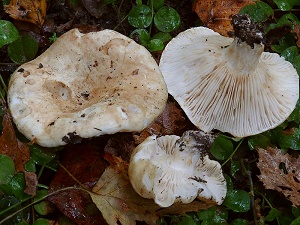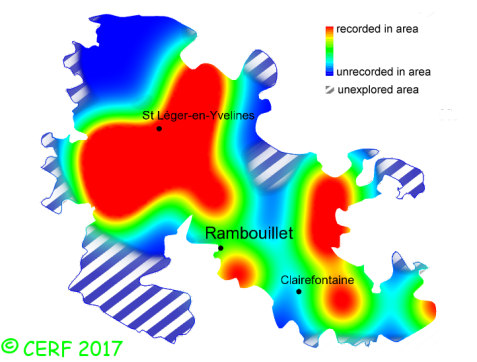| Russula delica Fr. |
|
|
|
|
|
|
The cap is white, sometimes ash grey or yellowish orange; its margin is smooth. The cap surface is smooth, not viscid nor sticky. The stem is white, sometimes washed with rust, without ring. The flesh is unchanging; its taste is acrid; the odour is fruity (young) then of fish oil (aged); its texture is grainy (breaking like a chalk stick). The gills are whitish, adnate to decurrent, distant . The spore print is whitish to pale cream. This species is mycorrhizal. It grows on the ground, in broad-leaved and coniferous woods, on a rather calcareous soil, with pine, beech, poplar, oak. The fruiting period takes place from April to November.
Chemical tests : flesh becoming pale pink when in contact with iron sulphate; fast and intense reaction to Ga´ac; reaction very faint of cap cystidia to sulpho-vanillin. Distinctive features : large species looking like a milkcap (Lactarius); margin inrolled a long time; many gills do not get to touch the stem; often covered with vegetal debris; stem sometimes blue at the top Russula delica is infrequent and scattered in the forest of Rambouillet, and is frequent, more generally speaking . | ||
|
page updated on 14/01/18

